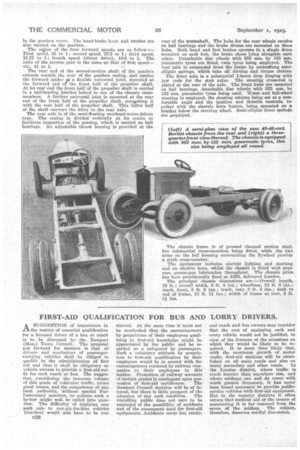FIRST-AID QUALIFICATION FOR BUS AND LORRY DRIVERS.
Page 10

If you've noticed an error in this article please click here to report it so we can fix it.
ASUGGESTION of importance in the matter of essential qualification for a licensed driver of a bus or coach is to be discussed by the Newport (ion.) Town Council The proposal put forward for decision is that all drivers and conductors of passengercarrying vehicles shalt be obliged to qualify in the administration of first aid and that it shall be obligatory on vehicle owners to provide a first-aid outfit for each coach or bus. The suggestion, considering the immense volume of thia grade of vehicular traffic, raises great issues, and the competency of any local authority, without special Parliamentary sanction, to enforce such a by-law might well be called into question. Tho difficulty of applying any such rule to non-ply-for-hire vehicles (coaches) would also have to be con
c26
aidered. At the same time it must not • be overlooked that the encouragement • by proprietors of their employees qualifying in first-aid knowledge might be appreciated by the public and be regarded as a safeguard by passengers. Such a voluntary attitude by proprietors to first-aid qualification by their employees would be in accord with the encouragement rendered by railway companies to their employees in this matter. Promotion of railway servants of certain grades is contingent upon possession of first-aid certificates. The Newport Council decision will be of in
tercet, but there is little prospect of the adoption of any such condition. The travelling public does not care to be reminded of the possibility of accidents and of the consequent need for first-aid equipments. Accidents occur but rarely, and coach and bus owners may consider that the cost of equipping each and every vehicle would not be justified, in view of the fewness of the occasions on which they would be likely to be required. It is more than likely that, with the enormous growth of motor traffic, first-aid stations will be established on all main roads and also on many secoairtry and other roads. In the London district, where traffic is much heavier than anywhere else, and where mishaps can and do occur with much greater frequency, it has never been found necessary to provide publicservice vehicles with first-aid equipment. But in the country districts it often occurs that medical aid or the means of summoning it is far removed from the scene of the mishap. The subject, therefore, deserves careful discussion.




























